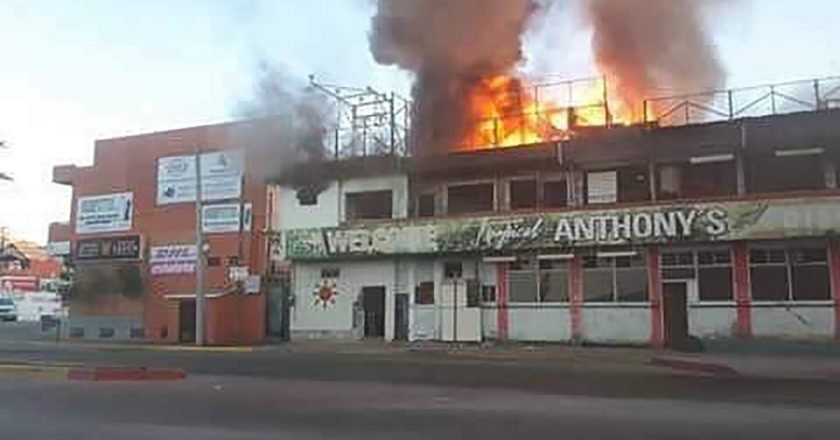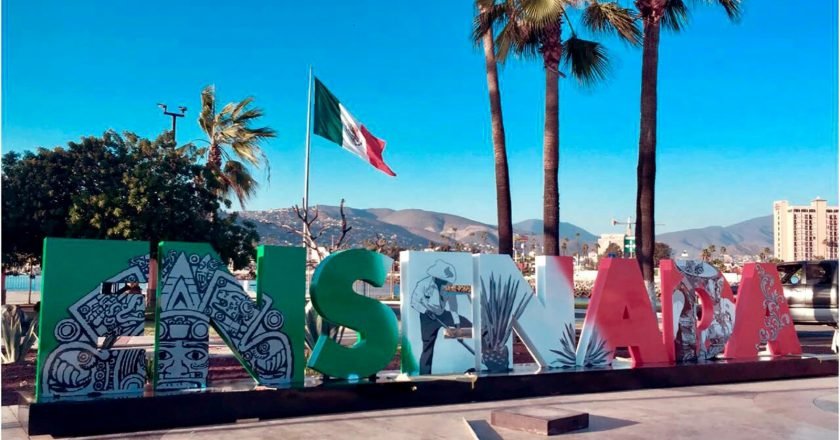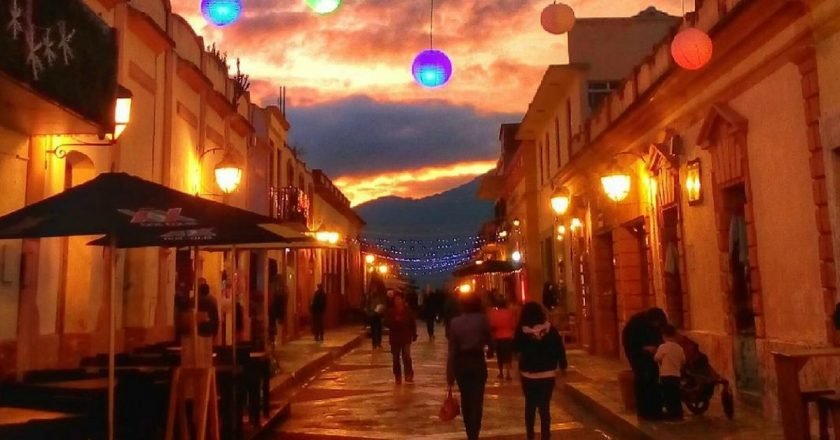Every Monday through Thursday, 9am – 12pm; Pickleball at Punta Azul Tennis Center. Cos: $1 court fee per person per day. Organized by Robert Canaan. BYO paddle and ball. Information: Facebook.com/ Rosarito Pickleball
Every Sunday 4 pm. Cultural Sundays in the park. Local Mexican and American dancers and musicians. At the IMAC in Abelardo L. Rodriguez park, west of Banamex. Facebook IMAC Rosarito. Free.
Every Sunday 2 – 4 pm at the IMAC Central Park (behind the Banamex on Juarez) Dancing for seniors. Salsa and merengue (among others) tunes designed to not throw out a hip. www.facebook.com/IMAC Rosarito
Second Sunday of every month, Pet sterilization by the Baja Spay and Neuter Foundation at the Centro de Diagnostico Clinico Vetrinario, ave. Queretaro #2331-3, Col Cacho, Tijuana. 200 pesos, 661-124-3619, or Robin at www.BajaSpayNeuter.org.
Last Sunday of every month, Jewish Chavurah. Gordon Kane – gordonmkane@gmail.com.
Every Monday, 10:45 am, duplicate bridge at Baja Gold Bridge Club, KM 42 at the Rosarito Beach Christian Church. bajagoldcoastbridgeclub@gmail.com.
Every Tuesday – Rotary Club meets at Rosarito Beach Hotel. 664-376-2620.
Every Tuesday 10am to 11am. Chair Yoga – Rosarito Wellness, Healing, Living at IMAC Park, room 1 in Rosarito (behind Banamex). Improve Balance & Coordination. Receive all the benefits of yoga in a gentle, Healing, Meditative yoga class where a chair is used for support and balance. Bring water, small towel and comfortable clothing. Instructor: Erendira Abel, Certified Holistic Health Specialist. $5 per class, paid at beginning of month. For registration and location: (661) 614-6036 Mexico or (619) 632-2965 US. Email: wellnesshealingliving@gmail.com
Every Tuesday. 9:00 am. Board Meeting for Yo Amo Rosarito at Ortega’s Buffet. See what events are under consideration or volunteer to help plan and run upcoming events.
Every Wednesday, 7:30 – 9:00 am; Tai Chi classes with certified instructor Eugenio Encinas at Galeria Fausto Polanco Rosarito. 350 pesos per month. Alyce: 664-368-6733; Alberto: 661-125-9191.
Every Second Wednesday (except December). 10 am. Friends of the Library meeting at main library of IMAC building next to Abelardo Rodríguez Park. Promotes reading and literacy in Rosarito. www.friendsofthelibrary.com.mx. 661-612-3659.
Second and FourthWednesday, 1 pm; Cruz Roja Primo Tapia Bingo at El Pescador Restaurant. 6 games/ 2 cards for $5. Reduced price menu; Jamesphausmann@gmail.com; 1-623-217-9795.
Every Second Wednesday OR the Wednesday prior to the Second Saturday (except December); Flying Samaritan’s General Meeting at Rene’s Casino (k28) at 1:30. Come early and enjoy lunch! www.flyingsamaritansrosarito.org; Susan Smith @ susansmithz@hotmail.com; US: 1-858-240-2360; MX: 661-100-6066.
Every Third Wednesday, 10 am, Meeting of Rosarito Sister Cities at City Hall, Fojadores Room, 2nd floor. Information and RSVP: FRAO@Rosarito.gob.mx.
Every Third Wednesday (except December) 1:00 – 4:00 pm, Flying Samaritan’s Outrageous Bingo at Popotla Jr. Restaurant (across from El Nino), Food and Drink specials; free parking behind restaurant; Six games, 4 cards for $10; Karen: kajomc@yahoo.coojm; (US) 1-818-515-0067l (MX) 664-609-3419.
Every Last Wednesday, 11:30 am, Wellness Wednesday Workshop “Intentionally Aging Gracefully” with Erendira Abel at IMAC a Abelard Rodriguez Park (behind Banamex). $6, and pre-registration is required. Info: wellnesshealingliving@gmail.com; (US) 1-619-737-2453, (MX) 661-614-6036.
Every Thursday. 8:30 am. Local Board of Realtors (APIR) meets at Oceana Grill. Good place for buyers or sellers to find a Realtor
Every Thursday, 10:30 am, Learn Spanish “Naturally” with Erendira Abel at Rosarito Beach Christian Church. $5, and pre-registration is required. Info: wellnesshealingliving@gmail.com; (US) 1-619-737-2453, (MX) 661-614-6036.
Every Second Thursday. 10 am. Cruz Roja Volunteers, Rosarito Chapter General Meeting at Popotla Restaurant. www.cruzrojarosarito.org.mx; President: Mary Moreno, miqueridomx@yahoo.com.
Every Third Thursday. 10 am. General Meeting for FRAO, Foreign Residents Assistance Office. Open to the public. Calafia Hotel. Speaker’s presentation. FRAO@Rosarito.gob.mx.
Every Fourth Thursday of the month, 12 pm, Baja Babes, the Rosarito Chapter of the Red Hat Society for ladies over 50 monthly luncheon. Each month a different restaurant. margit@prodigy.net.mx.
Every Friday. 4pm. Spanish class main library, by IMAC, in Abelardo Rodriguez park behind BanaMex. Free but donation appreciated.
Every Saturday, 10:00 am at IMAC Central park. Chess for all ages. www.facebook.com/IMAC Rosarito.
Every First Saturday. 10 am. United Society of Baja California (USBC) general meeting at Casa Blanca Restaurant, Rosarito Beach Hotel. Good info for the English speaking community of charitable, community service and social organizations. www.unitedsocietyofbaja.org. 661-614-1113.
Every First Saturday. Noon-sundown. Open Studio Art Walk, a free tour of galleries in Rosarito Beach Hotel commercial center. Meet artists at work in their studios. pacothepainter@hotmail.com
Every Third Saturday. 1pm. USBC, United Society of Baja California, monthly potluck dinner, at La Maroma sports bar, across from Burger King. Different theme every month. Usually live entertainment. Free. Membership $20 per year.
Every day but one day at a time AA Grupo Gringo meets daily #16 Mar Meditteraneo (two blocks behind Del Mar Beach Club). Saturday, 3:00; Sunday, Monday, Thursday: 10:00 am; Tuesday, Wednesday, Friday: 6:00 pm. Additional meetings in Cantamar (just south of the footbridge) Tuesday and Friday, 10:00 am. 661-614-1678.
November 16, Friday, 9 am – 4 pm; 11th Biennial Baja California Photo Contest and Exhibit at CEART Rosarito. For rules and information of submitting photos, go to Facebook.com/ CEART Playas de Rosarito. 661-100-6338.
November 21, Wednesday, 6:30 pm; Author Karla Contreras presents her novel, “Dios Quiere Hablarte” at CEART Rosarito. Free. 661-100-6338. Facebook.com/ CEART Playas de Rosarito.
November 22, Thursday; Thanksgiving Dinner at Bobby’s By The Sea (k 43); 3 seatings: 2:00 – 4:30 pm, 5:00 – 7:30 pm, or 8:00 – 10:00 pm. $14.95 includes turkey, all the sides, pumpkin pie, and welcome champagne. Reservations required! www.bobbysatk43.com; 661-114-6278.
November 22, Thursday, 3:00 AND 4:00 pm; Thanksgiving Dinner at Popotla Restaurant. $14.50 includes Turkey, all the sides, and pumpkin pie. Reservations required. 661-612-1505.
November 22, Thursday, 2 – 4 pm; Thanksgiving Potluck at Magana’s Tacos, Primo Tapia. Turkey will be provided. You bring a side to share. Facebook.com/ Maganas Restaurant Bar.
November 24, Saturday, 9 am – 4:30 pm; “Encuentro de Industrias Culturas y Creativas 2018” at CEART Rosarito. Featuring Paolo Mercado Espinoza and Arturo Sastre Blanco. $400 pesos. Facebook.com/ Encuentro de Industrias Culturales y Creativas.
November 25, Sunday, 11 am – 2 pm; Battle the Bartender Bloody Mary Contest at Magana’s Tacos. Information: 01-646-155-0586. Facebook.com/ Maganas Restaurant Bar.
November 27, Tuesday, 8:30 am – 12 pm; 3rd Annual Feminine Culture Conference at CEART Rosarito. Subjects include personal safey and security, domestic violence, and more. Information: mcfrosarito@gmail.com or 661-850-5957.
December 2, Sunday, 2 – 6pm; Dance Party at Tempest Trading, (k 40.5). Free. DJ playing rock & roll, disco, blues, and more. Facebook.com/ Tempest Trading Baja.
December 5, Wednesday, 1 pm; Flying Samaritan’s Annual White Elephant Gift Exchange Luncheon. Bring a $20+ gift to swap. Donation of $15 includes luncheon. RSVP: susansmithz@hotmail.com; 661-100-6066 (MX); 1-858-240-2360 (US).














